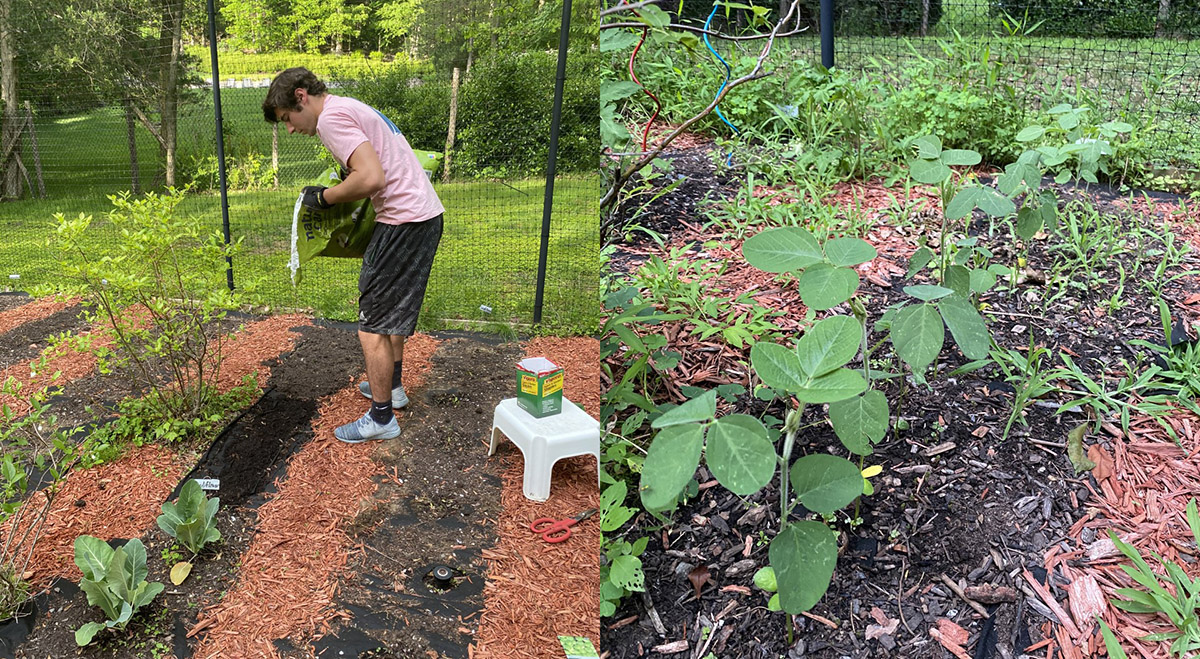Regeneron Science Talent Search scholar conducts at-home study on crop improvement
In a freshman biology class, a simple demonstration comprises a candle and a plant in an enclosed space. Through the process of photosynthesis, carbon dioxide emitted by the candle is converted into oxygen by the plant, allowing the candle to last longer. For 18-year-old Bailey Goldstein, this experiment sparked his interest in photosynthesis.

“When it was time to pick my topic for my science research project, I knew that I wanted to do something that had a broad or sustainable change that really impacted the most amount of people as possible,” said Goldstein. “I came across this idea of improving photosynthesis in crops to grow more yield.”
For his science/research program at Byram Hills High School in New York, Goldstein began researching institutions and scientists who were experts in the field. It was then that Goldstein came across the Realizing Increased Photosynthetic Efficiency (RIPE) organization website and found Ikenberry Endowed University Chair of Crop Sciences and Plant Biology Stephen Long (BSD/CABBI/GEGC).
“I was really lucky to reach out to Dr. Long, who was really enthusiastic and willingly agreed to mentor me,” said Goldstein. “It was a super exciting moment and from there, we built a relationship and worked pretty closely together to continue and perform the study that I did. He became the basis of my dedication to science and the science research program, and I was lucky enough to have him as a mentor.”
This year, Goldstein was named a top 300 scholar in the Regeneron Science Talent Search 2021, the nation’s oldest and most prestigious science and math competition for high school seniors. The Regeneron Science Talent Search scholars were selected from 1,760 applications received from 611 high schools across 45 states, Washington, DC, Puerto Rico and 10 countries. Each year, student entrants submit original research in critically important scientific fields of study and are judged by leading experts in their fields. Unique among high school competitions in the U.S. and around the world, the Regeneron Science Talent Search focuses on identifying, inspiring and engaging the nation’s most promising young scientists who are creating the ideas that could solve society’s most urgent challenges. As a top scholar, Goldstein will receive $2,000, and his school will also receive $2,000 to use toward STEM-related activities.
Goldstein’s research study aimed to determine if differences in crop yield were due to different non-photochemical quenching (NPQ) mechanisms – employed by plants and algae to protect themselves from high light intensity – and whether NPQ was viable for crop improvement. Due to the COVID-19 pandemic, Goldstein’s visit to the IGB was cancelled, but that didn’t stop him from conducting research.
“I used an oak tree in my backyard to assess the difference between NPQ in different environments, and I also planted my own soybeans to see whether crops in today's environment are in fact optimized with this mechanism,” said Goldstein. “I definitely found positive results, and I am able to conclude that this NPQ mechanism does vary with different environments. I did observe the sun and shade leaves of the oak tree had different relaxation procedures as a result of having different kinetics of this mechanism, showing that NPQ is a viable method to improve crop efficiency.”
“Increasing yield will be critical for feeding the anticipated growth in world population,” said USDA-ARS Research Plant Physiologist Justin McGrath, also an adjunct professor of plant biology, who mentored Goldstein on the project. “It was a tough year to attempt a project like this, but Bailey was enthusiastic and very creative in executing an interesting experiment with important repercussions.”
Long and McGrath sent Goldstein equipment for collecting measurements and trained him remotely during the past summer. Despite some setbacks in setting up his own DIY experiment, Goldstein remained in constant communication with his mentors and was successful in collecting his own data.
“I had to achieve a high light stress within a specific range, which was very hard to achieve, and so I constantly had to experiment with the light and see what worked best,” said Goldstein. “That's when I came across using my bathroom as the site of high light stress, and I was able to quickly transition the leaves to my closet next to my bathroom for the site of darkness. I kind of created the procedure as I went along and did what made sense.”
“I would just like to say that Dr. Long and everyone at Illinois, in this field, is doing incredible, amazing work,” said Goldstein. “It's so amazing that all these people are coming together, funding this research, conducting this research, and going through all this work for the common good of humanity, and I think it's something to be admired.”
